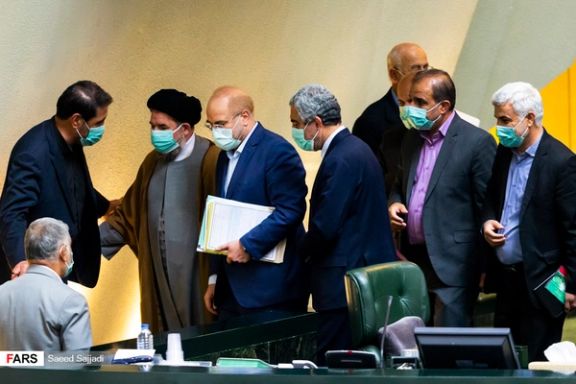Iran Faces Huge Budget Deficit With Oil Revenue Projections Not Met

By the end of the current Iranian fiscal year, the government needs an additional $12 billion to balance its budget, with revenues falling short of projections.

By the end of the current Iranian fiscal year, the government needs an additional $12 billion to balance its budget, with revenues falling short of projections.
Sharq news website In Tehran has reported that by March 20, 2022, when the Iranian fiscal year ends the government either has to raise an additional $12 billion or cut expenditures by the same amount, otherwise it has to continue printing money. This constitutes more than 30 percent of the total budget. Other estimates have put the number much higher.
The dollar value of the deficit is calculated according to an average exchange rate of 250,000 rials to one US dollar since March 21. The government’s nominal exchange rate of 42,000 rials to the dollar is essentially meaningless as it only applies to a limited number of imported essential good subsidized with cheap dollars provided to importers by the central bank.
If the deficit is calculated based on the official government exchange rate, it would reach $71.5 billion.
Fararu website in Iran says that new head of Iran’s Planning and Budget Organization, Masood Mirkazemi has given up balancing the current budget and is already looking at next year’s deficit. Mirkazemi, appointed by the new president Ebrahim Raisi in August has warned that printing more money will simply contribute to an already high rate of inflation.
Latest figures published by the Statistical Center of Iran showed that overall annual inflation is close to 50 percent, while food prices have risen nearly 100 percent in the past year.
The predictable issue with the budget deficit is over-optimistic oil export projections made last December when the current budget was being drafted. Iranian officials put expected oil exports at a minimum of 1,5 million barrels per day, with some predicting over two million barrels. But the big caveat in these projections was the lifting of US sanctions. In the meantime, Iran did not reached agreement in its nuclear talks that took place from April to June, and US sanctions remained in place.
At the present time, no new negotiations are scheduled because Tehran has not agreed to return to the talks adjourned since June.
Based on a report by the Parliament research Center, only half of the projected budget revenues have been realized. The news about the government’s oil revenues is worse, with only three percent of the projected exports money going into the budget.
This is a bit puzzling because Iran has been reported selling a few hundred thousand barrels of oil per day. There could be different explanations for the discrepancy. First, there is the distinct possibility that illicit oil exports to China are not being paid for by cash. The second possibility is that payments are made also in illicit ways and either do not enter government coffers or are deliberately not being reported.
Iran’s oil exports plunged from a high of around 2.5 million barrels per day in 2017 to as low as 320,000 bpd in 2019-2020, according Kpler data intelligence firm. Illicit oil exports have somewhat increased in 2021 but by their nature of secret deals, there is little cash revenue for Iran.
Nevertheless, only three percent of oil revenues being realized is a truly low number. Even 370,000 barrels of oil shipped per day would be 15 percent of the pre-sanction level.
Having six more months until the end of the fiscal year, Iran is facing a serious budget deficit, which means it simply cannot pay operational expenses, such as regular wages to millions of employees, pay increases teachers and other government employees demand and leave many projects unfinished.